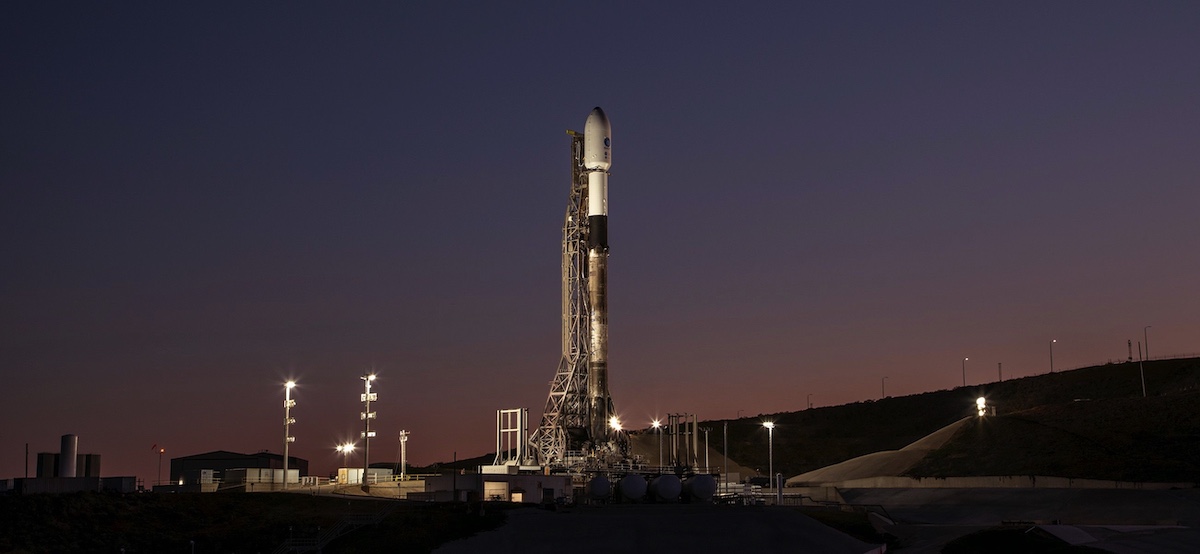
SpaceX has delayed the launch from California of a Falcon 9 rocket with a U.S.-French environmental monitoring satellite from Thursday to Friday, allowing more time to review the source of moisture in two of the launcher’s booster engines.
The mission to launch the Surface Water and Ocean Topography, or SWOT, satellite was supposed to blast off from Vandenberg Space Force Base at 3:46 a.m. PST (6:46 a.m. EST; 1146 GMT) Thursday. NASA, the primary funder of the SWOT mission, said the launch is now targeted for the same time Friday.
Forecasters at Vandenberg predict a 100% probability of good weather for liftoff Friday, when SpaceX has a 10-minute launch window available.
The launch is one of as many as three Falcon 9 rockets currently scheduled for launch Friday. SpaceX teams in Florida are readying two Falcon 9 rockets for missions from different launch pads Friday afternoon, carrying two O3b mPOWER broadband satellites into orbit for SES, and another batch of SpaceX’s own Starlink internet relay stations.
Julianna Scheiman, SpaceX’s director of civil satellite missions, said in a press conference Wednesday that technicians discovered the signature of moisture in two of the rocket’s nine first stage Merlin engines during launch preparations. Officials believe the moisture is likely from heavy rain that fell on the Falcon 9 when it was on the launch pad last week for an engine test-firing.
She said the SpaceX planned to perform additional inspections on the two engines on the launch pad at Vandenberg later Wednesday to determine whether the moisture is from water intrusion or something else. If it’s water, she said the launch could likely proceed. “If it’s something other than water, we’ll have to stand down and replace those engines to launch reliably,” she said.
Other possibilities for the source of the moisture could be a leak of kerosene fuel, or fluid stuck in the reusable engines after their refurbishment following a previous launch. The first stage booster flying on the SWOT mission is designated B1071, and is set to make its sixth flight to space. The booster will return to a propulsive landing at Vandenberg about seven-and-a-half minutes after liftoff.
“Teams completed inspections of the rocket’s engines today, but will use the additional time to complete data reviews and analysis before a launch attempt,” NASA said in a brief statement Wednesday night.
The SWOT mission is a joint project developed by NASA and CNES, the French space agency, to make the first global survey of Earth’s surface water. The SWOT mission builds upon previous satellites that have measured rising sea levels and the height of ocean waves. But SWOT introduces a new instrument that can see finer details in the ocean’s surface roughness, and extend the water measurements to freshwater bodies like lakes and rivers.
“SWOT will provide nearly a complete view of the surface water on Earth,” said Ben Hamlington, a sea level researcher at NASA’s Jet Propulsion Laboratory. “Data collected by SWOT over the land, over the ocean, and where the land and ocean meet along our coastlines, is going to play a really important role in informing us about our daily lives and livelihoods.”
The Falcon 9 rocket will place the SWOT satellite into an orbit about 532 miles (857 kilometers) above Earth at an inclination of of 77.6 degrees to the equator. SWOT will unfold its main science instrument, a two-wing radar interferometer, within the first week of its mission, then begin a six-month test campaign before beginning science operations in mid-2023.
“SWOT is a game changer,” said Tahani Amer, NASA’s program executive for the mission. “Water connects all of us and we’re very excited to share the data from SWOT.”
Email the author.
Follow Stephen Clark on Twitter: @StephenClark1.
